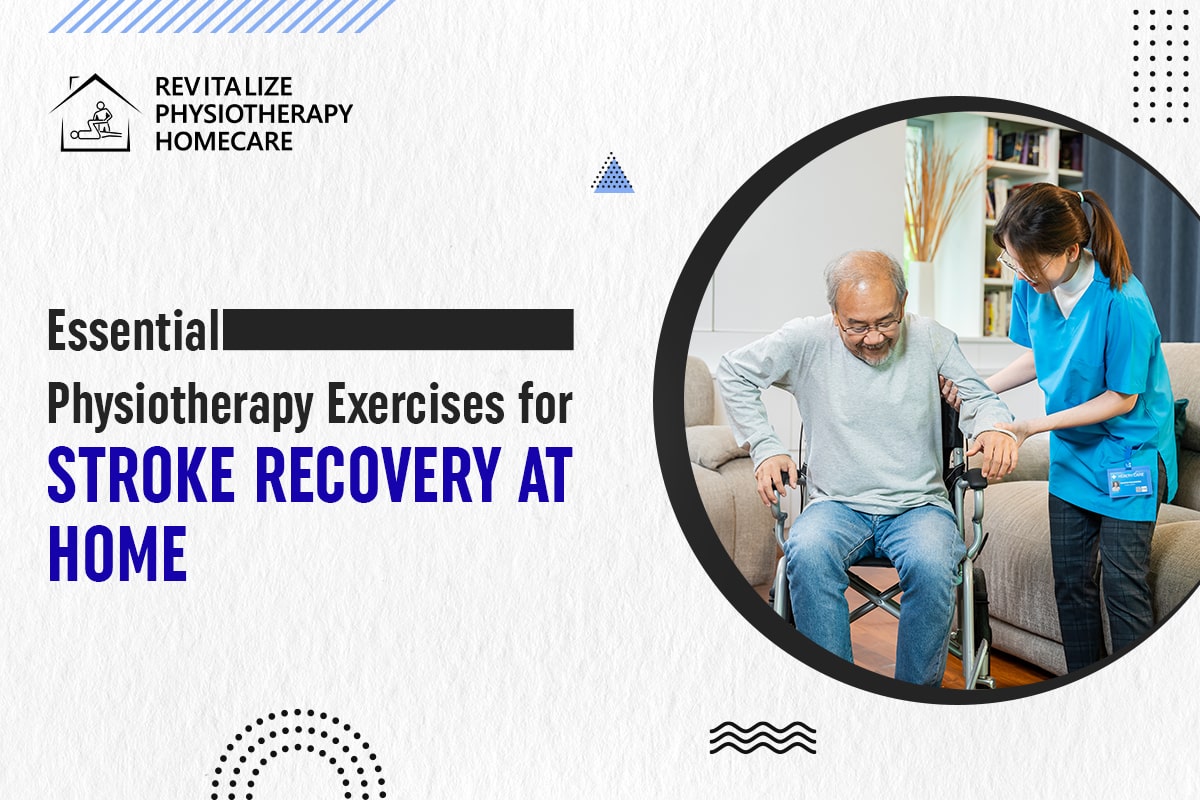Essential Physiotherapy Exercises for Stroke Recovery at Home
Recovering from a stroke can be a difficult process that demands perseverance, patience, and the appropriate rehabilitation tactics. Physiotherapy is essential in the rehabilitation process, especially when done at home.
This blog delves into fundamental physiotherapy exercises meant to help stroke survivors regain strength, coordination, and balance, ultimately increasing their quality of life. Let's have a look at some activities you can do at home to help with stroke therapy.
Understanding the Importance of Physiotherapy Post-Stroke
After a stroke, patients frequently experience varying degrees of physical impairment, depending on the part of the brain damaged. These impairments can include paralysis, weakness, and difficulties with balance and coordination.
Physiotherapy is important because it focuses on improving physical function through exercises that increase mobility, strength, and coordination, as well as retraining the brain to operate the damaged limbs.
Setting Up for Success
Before starting any exercise regimen, it’s important to:
- Consult with a Healthcare Professional:
Always get a personalized exercise plan tailored to your specific needs by a qualified physiotherapist.
- Create a Safe Environment:
Ensure the exercise area is free of obstacles and hazards to prevent falls. It may be helpful to have a caregiver or family member nearby during the exercises.
1. Range of Motion Exercises
These exercises improve joint flexibility and avoid muscle tightness. They are particularly important for body parts that are paralyzed or have limited motion.
- Arm and Wrist Movements: Gently rotate the wrist, bend it forward and backward, and open and close the fingers.
- Leg and Ankle Movements: Point and flex the toes, rotate the ankles, and bend the knees to bring the heel closer to the hips.
2. Strengthening Exercises
Strengthening exercises are vital for building muscle strength and improving movement in affected limbs.
- Leg Lifts: Sitting in a chair, slowly extend one leg straight out in front of you and hold the position for a few seconds before lowering it.
- Arm Raises: While seated or standing, lift your arms sideways or toward the ceiling, using light weights or resistance bands if possible.
3. Balance Training
Improving balance is crucial for preventing falls and enhancing mobility.
- Seated Marching: While sitting in a chair, march your legs up and down, alternating feet.
- Standing Exercises: Stand behind a chair and hold onto the back. Lift one foot off the floor and balance on the other foot for as long as possible. Switch feet and repeat.
4. Coordination Drills
Stroke recovery often requires relearning certain motor skills. Coordination exercises help improve the ability to perform controlled movements.
- Hand Exercises: Using small objects like marbles or buttons, practice picking them up, moving them from one hand to the other, and placing them into a small container.
- Walking Drills: Practice walking along a straight line or navigating around obstacles placed on the floor.
5. Stretching
Regular stretching helps maintain muscle elasticity and prevent contractures.
- Neck and Shoulder Stretch: Gently tilt your head toward your shoulder and hold for a few seconds on each side.
- Calf Stretch: Stand facing a wall with your hands on the wall, step one foot back, and press the heel down towards the floor.
Conclusion
Stroke rehabilitation is a long process that demands ongoing effort. Including these fundamental physiotherapy exercises in your everyday regimen will dramatically improve healing outcomes.
Remember that every small step forward represents progress. Use services such as physio for stroke rehab to receive professional supervision and help at home. Contact Revitalize Physiocare, Brampton (Canada). Our trained physiotherapists have extensive experience providing stroke rehabilitation treatment.
To schedule an appointment, please contact 905-452-0222. You can also visit https://revitalizephysiocare.com or email revitalizephysio@gmail.com.




